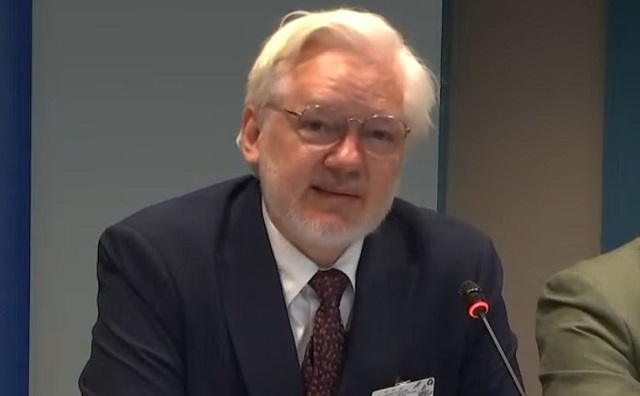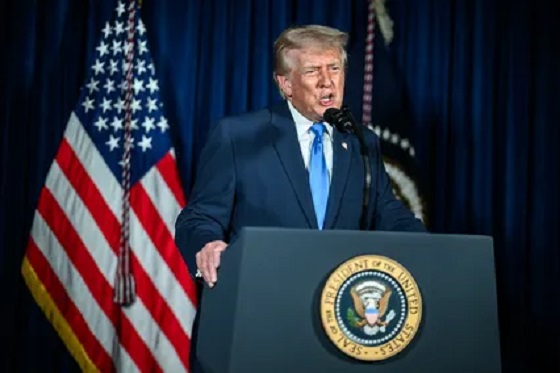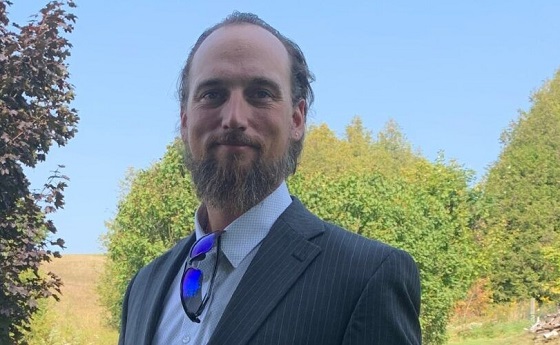International
Julian Assange breaks silence, slams Mike Pompeo for wanting to assassinate him

From LifeSiteNews
By Stephen Kokx
The WikiLeaks founder told the Parliamentary Assembly of the Council of Europe that ‘the CIA drew up plans to kidnap and assassinate me within the Ecuadorian embassy in London and authorized going after my European colleagues.’
WikiLeaks founder Julian Assange is standing by his assertion that the U.S. Deep State sought to assassinate him while he was detained.
🇪🇺JULIAN ASSANGE: THE CIA TARGETED MY WIFE AND SON
"By March 2017, WikiLeaks had exposed the CIA's infiltration of French political parties; its spying on French and German leaders.
CIA director Pompeo launched a campaign of retribution.
It is now a matter of public record… https://t.co/0GB83xT1JO pic.twitter.com/CEezku6ZKI
— Mario Nawfal (@MarioNawfal) October 1, 2024
Assange, 53, was in Strasbourg, France today making his first public appearance after being released in June from London’s high-security Belmarsh Prison, where he had been confined for five years.
Speaking to representatives of 46 countries at the Parliamentary Assembly of the Council of Europe, the Australian journalist reiterated that Mike Pompeo, Donald Trump’s CIA director, planned on killing him.
“It is now a matter of public record that under Pompeo’s explicit direction, the CIA drew up plans to kidnap and assassinate me within the Ecuadorian embassy in London and authorized going after my European colleagues, subjecting us to theft, hacking attacks, and the planting of false information,” Assange said.
“My wife and my infant son were also targeted,” he continued. “A CIA asset was permanently assigned to track my wife, and instructions were given to obtain DNA from my 6-month-old son’s nappy. This is the testimony of more than 30 current and former U.S intelligence officials speaking to the U.S. press, which has been additionally corroborated by records seized in a prosecution brought against some of the CIA agents involved.”
After founding WikiLeaks in the mid 2000s, Assange came under intense scrutiny from Western governments after he helped expose war crimes committed in Afghanistan and Iraq. He sought refuge in the Ecuadorian embassy in the U.K. beginning in 2012.
In total, Assange spent 14 years of his life as a political prisoner until he struck a plea deal this summer with the U.S. government, which had charged him with 18 counts of violating the Espionage Act. He says that he chose to make the deal as the likelihood he would ever receive justice was nearly impossible.
“The CIA’s targeting of myself, my family, and my associates through aggressive, extrajudicial, and extraterritorial means provides a rare insight into how powerful intelligence organizations engage in transnational repression,” Assange said Tuesday. “I am not free today because the system worked. I am free today after years of incarceration because I pleaded guilty to journalism.”
Reports of the CIA’s plan to take Assange out surfaced in 2021, when Yahoo News revealed that intelligence agents had stated that Pompeo had been looking into possible methods of assassinating Assange following his release of “Vault 7” in 2017, which the agency described as “the largest data loss in CIA history.”
Last year, an uncomfortable Pompeo told libertarian journalist John Stossel that it “would have been illegal” for him to draw up plans to kill Assange, who he said is simply “trying to save his tuchus.”
In November 2023, Tucker Carlson announced on X that he had visited Assange at Belmarsh. A photo he posted to the platform showed Carlson walking with Assange’s wife Stella, who was at the event in Strasbourg today.
Visiting Julian Assange at Belmarsh Prison this morning pic.twitter.com/5XR51QTZgy
— Tucker Carlson (@TuckerCarlson) November 2, 2023
Among other notable moments in WikiLeaks history is its releasing of emails from high-ranking American political actors, including longtime Clinton associate John Podesta. Podesta’s bizarrely worded emails about “President Obama,” “hot dogs,” and “cheese pizza” are believed by some to be coded messages about Washington elites engaging in pedophilia and human trafficking. Other Podesta emails indicate he had an extensive plan to liberalize core teachings of the Catholic Church under the auspices of a “Catholic Spring.”
In August 2016, Assange implied that one of his sources was slain Democratic Party staffer Seth Rich, who was found dead on the streets of Washington, D.C. in 2016 at 4:20 a.m. after being shot in the back. Some contend that the 27-year-old Rich, who was a Bernie Sanders supporter, was murdered for leaking emails about how the party rigged the presidential primary in favor of Hillary Clinton. Rich’s family – perhaps under pressure from clandestine forces to remain quiet – have stated that such accusations are untrue.
Assange and his supporters have repeatedly maintained he has done nothing wrong, stating that he is a journalist and that the public has a right to know what their corrupt leaders are doing. Governments have maintained that the data he published is top secret and that his actions did and does endanger lives.
Daily Caller
Trump Reportedly Escalates Pressure On Venezuela With Another Oil Tanker Seizure


From the Daily Caller News Foundation
The U.S. intercepted and seized a vessel in international waters near Venezuela, marking the second such operation in recent weeks, multiple outlets reported Saturday.
The U.S. Coast Guard led the operation with assistance from other branches of the military, U.S. officials told CNN.
The interdiction follows on the heels of the Dec. 10 seizure of a sanctioned tanker off the Venezuelan coast. It also comes just days after President Donald Trump announced a sweeping blockade on all sanctioned oil tankers arriving to or leaving the South American nation, the ruling regime of which he designated a foreign terrorist organization.
Dear Readers:
As a nonprofit, we are dependent on the generosity of our readers.
Please consider making a small donation of any amount here.
Thank you!
“The illegitimate Maduro Regime is using Oil from these stolen Oil Fields to finance themselves, Drug Terrorism, Human Trafficking, Murder, and Kidnapping,” Trump posted Tuesday on Truth Social. “I am ordering A TOTAL AND COMPLETE BLOCKADE OF ALL SANCTIONED OIL TANKERS going into, and out of, Venezuela.”
When asked following the first seizure what the U.S. would do with the confiscated oil, Trump said, “Well, we keep it, I guess.”
The operations come amid months of escalating U.S. pressure on Venezuela.
American armed forces have steadily increased their presence and operations in the southern Caribbean off Venezuela’s coast, including numerous strikes on drug smuggling vessels. The buildup has fueled speculation about a potential full-scale confrontation with Maduro or even a material push for regime change.
Trump reportedly offered Maduro a deal in late November to vacate power in exchange for safe passage for him and his family. The U.S. also placed a $50 million bounty on Maduro in August, the largest sum ever offered for a sitting head of state.
In announcing the blockade Tuesday, Trump warned the “illegitimate Maduro Regime” that the “Armada” surrounding the country “will only get bigger, and the shock to them will be like nothing they have ever seen before.” He also demanded that Maduro “return to the United States of America all of the oil, land, and other assets that they previously stole from us.”
Despite the growing pressure, Maduro dispatched two non-sanctioned vessels Thursday carrying oil to China, Reuters reported.
The Coast Guard referred questions on the operation to the White House, which did not immediately respond to the Daily Caller News Foundation’s request for comment.
Health
FDA warns ‘breast binder’ manufacturers to stop marketing to gender-confused girls

From LifeSiteNews
Dr. Marty Makary took aim at the transgender-medical-industrial complex that has exploded in recent years during a recent press conference.
Food and Drug Administration (FDA) commissioner Dr. Marty Makary has sternly warned companies manufacturing “breast binders” to cease marketing and supplying their product to gender-confused girls seeking to make their bodies appear masculine.
“Today the FDA is taking action,” said Makary in a press conference. “We are sending warning letters to 12 manufacturers and retailers for illegal marketing of breast binders for children, for the purposes of treating gender dysphoria.”
“Breast binders are a class one medical device with legitimate medical users, such as being used by women after breast cancer surgery,” but “these binders are not benign,” he cautioned. “Long-term usage has been associated with pain, compromised lung function, and even difficulty breast feeding later in life.”
“The warning letters will formally notify the companies of their significant regulatory violations and require prompt corrective action,” said the FDA head.
.@DrMakaryFDA: “Today the FDA is taking action. We are sending warning letters to 12 manufacturers and retailers for illegal marketing of breast binders for children, for the purposes of treating gender dysphoria.” pic.twitter.com/6JNAy36223
— HHS Rapid Response (@HHSResponse) December 18, 2025
The warning letter addressed to California manufacturer, GenderBender, notes that the company’s website states that “[c]hest binding is the practice of compressing breast mass into a more masculine shape, often done in the LGBTQ community for gender euphoria.”
“Your firm should take prompt action to address any violations identified in this letter. Failure to adequately address this matter may result in regulatory action being initiated by the FDA without further notice. These actions include, but are not limited to, seizure and injunction,” advised the FDA.
During his presentation, Makary took aim at the transgender-medical-industrial complex that has exploded in recent years.
“One of the most barbaric features of a society is the genital mutilation of its children,” observed Makary.
“Pushing transgender ideology in children is predatory, it’s wrong, and it needs to stop,” he declared.
“This ideology is a belief system that some teachers, some pediatricians, and others are selling to children without their parents knowing sometimes, or with a deliberate attempt to remove parents from the decision making,” Makary explained.
To witness society “putting kids on a path of chest binders, drugs, castration, mastectomies, and other procedures is a path that now many kids regret,” he lamented, as he pointed to Chloe Cole, who has reverted to her God-given femininity after undergoing so-called “gender-affirming” surgery as a teen.
Cole is a leading voice for young people who have “detransitioned” after having medically, surgically, and socially attempted to “transition” to a member of the opposite sex.
.@DrMakaryFDA: “Pushing transgender ideology in children is predatory, it's wrong, and it needs to stop.” pic.twitter.com/TXxWNEtNZk
— HHS Rapid Response (@HHSResponse) December 18, 2025
-

 Censorship Industrial Complex20 hours ago
Censorship Industrial Complex20 hours agoDeath by a thousand clicks – government censorship of Canada’s internet
-

 Daily Caller21 hours ago
Daily Caller21 hours agoChinese Billionaire Tried To Build US-Born Baby Empire As Overseas Elites Turn To American Surrogates
-

 Great Reset23 hours ago
Great Reset23 hours agoViral TikTok video shows 7-year-old cuddling great-grandfather before he’s euthanized
-

 Automotive1 day ago
Automotive1 day agoPoliticians should be honest about environmental pros and cons of electric vehicles
-

 Alberta22 hours ago
Alberta22 hours agoSchools should go back to basics to mitigate effects of AI
-

 Bruce Dowbiggin1 day ago
Bruce Dowbiggin1 day agoHunting Poilievre Covers For Upcoming Demographic Collapse After Boomers
-

 Alberta2 days ago
Alberta2 days agoAlberta’s new diagnostic policy appears to meet standard for Canada Health Act compliance
-

 COVID-191 day ago
COVID-191 day agoFreedom Convoy protester appeals after judge dismissed challenge to frozen bank accounts


